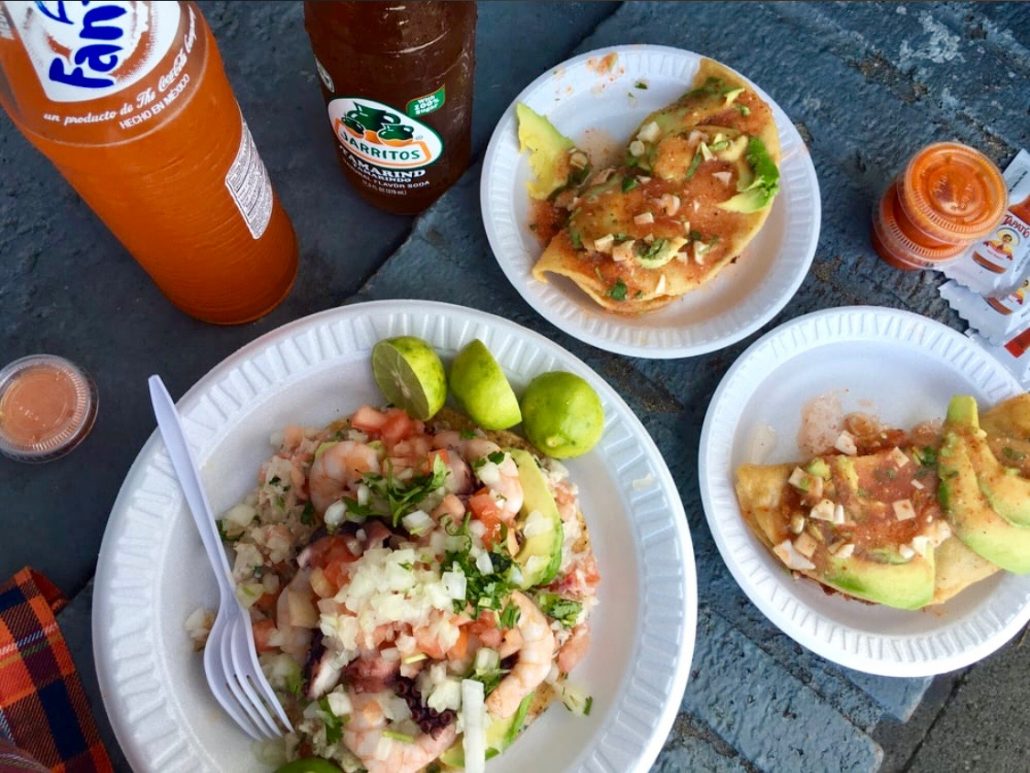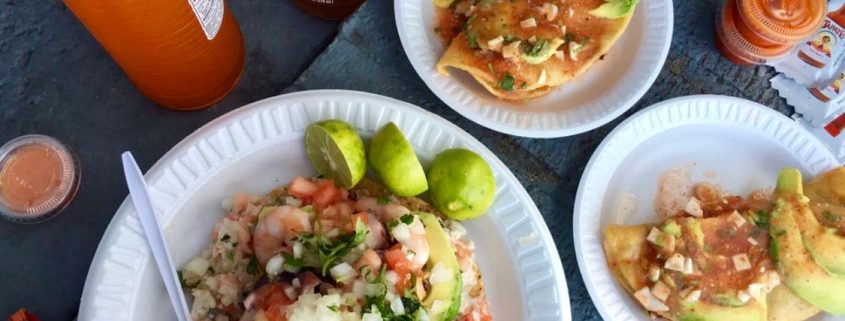Eating LA Before It Eats Itself: Mariscos Jalisco challenges traditional taco truck concept

Perched along a busy street in East Los Angeles, surrounded by warehouses and apartment buildings, nestled inside an unassuming food truck, is the single best taco I have ever had.
Mariscos Jalisco is a far cry from the standard Los Angeles food truck — the car is adorned with a single, humble logo, unlike the visual overload of brightly-colored modern trucks slinging trendy food in L.A.’s hipster neighborhoods. In many ways, Mariscos Jalisco is no different from the average lonchera, serving low-cost Mexican food to a mostly Latinx neighborhood.
However, Mariscos Jalisco eclipses the definition of lonchera with a swift drizzle of fresh salsa.
Underneath a layer of chilled, spiced tomatoes and sliced avocados sits a steaming, crackling taco, freshly fried. The first bite gives way with a loud crunch, the taste of toasted corn tortilla and earthy avocado supporting a mouth-watering filling of soft shrimp. The salsa and avocado work in tandem to balance out the physical heat of the taco, fresh from the fryer (which likely burnt your tongue on impact, but you won’t mind because the taco is just that good).
Beyond the tacos de camarones, Mariscos Jalisco sells a variety of seafood: Shrimp coctél drowning in flavorful sauce, tostadas piled high with ceviche, mouth-scorching aguachile — all executed with great craft and care. Only a select few work inside the truck, guarding owner Raul Ortega’s shrimp taco recipe from eager eyes.
For eighteen years now, Mariscos Jalisco has perfected and sold its trademark tacos, which have won competitions and occupied high ranks on many best taco lists. It sat square on Jonathan Gold’s latest 101 Restaurants list, as it had for many years prior and recently received a Michelin Bib Gourmet award. There is no debate: Mariscos Jalisco is excellent, and the city is well aware of it.
Much like the way Mariscos Jalisco transcends its food truck exterior, it also transcends local interest. Because of its well-deserved fame, Mariscos attracts visitors from all areas of Southern California, prompting hour-plus pilgrimages to try the famous shrimp tacos.
For many, this is their first time ever nearing Boyle Heights, a neighborhood shaped by constant battles against government erasure and gentrification.
Across decades, Boyle Heights has fostered a Latinx community focused on cultural preservation and survival. Now, as population and housing costs rise, the rest of the city has begun to creep into East L.A., replacing low-income housing with expensive studio apartments and displacing neighborhoods like Boyle Heights.
The neighborhoods are now dotted with art galleries and artisanal coffee shops, a tell-tale sign that gentrification is already underway. Groups like Defend Boyle Heights and the Boyle Heights Alliance Against Artwashing and Displacement are actively working to remove gallery spaces and white business from the area, sometimes resorting to violence and graffiti to make their message clear — wealthier people, and the displacement they bring with them, are not welcome.

Peering through the reviews on the Mariscos Jalisco Yelp page, a similar pattern emerges: “The area was kind of sketchy, but the tacos are great!”
Having a restaurant as profound as Mariscos Jalisco deep in East L.A. is likely a matter of pride to its community, and I am always eager to introduce new people to the most unique and delicious tacos in Los Angeles. However, as more and more white people flock to the area — be it for food, or art, or cultural sightseeing — it is important to consider the people that fostered it.
I try to be mindful about where I am spending my money in Boyle Heights — am I contributing to the community or the community’s displacement?
Christina Tiber is a senior
writing about food. Her column, “Eating L.A. Before It Eats Itself,” runs every other week.

